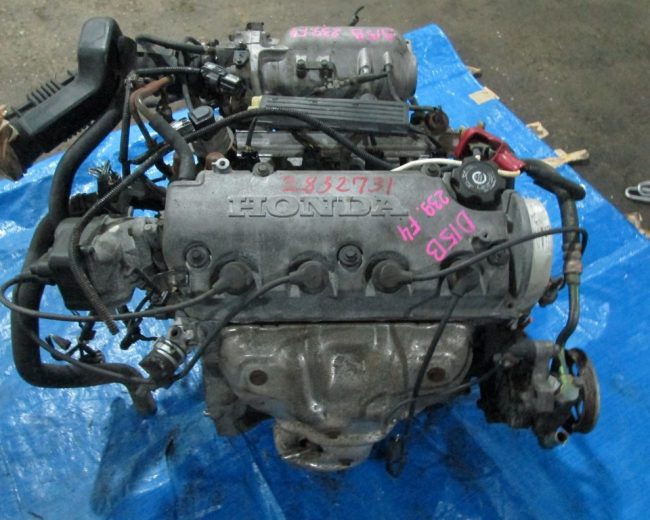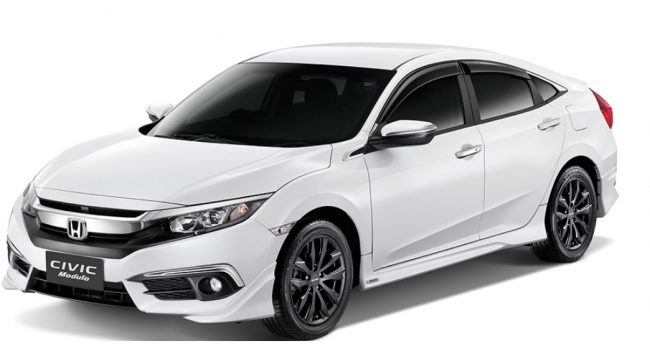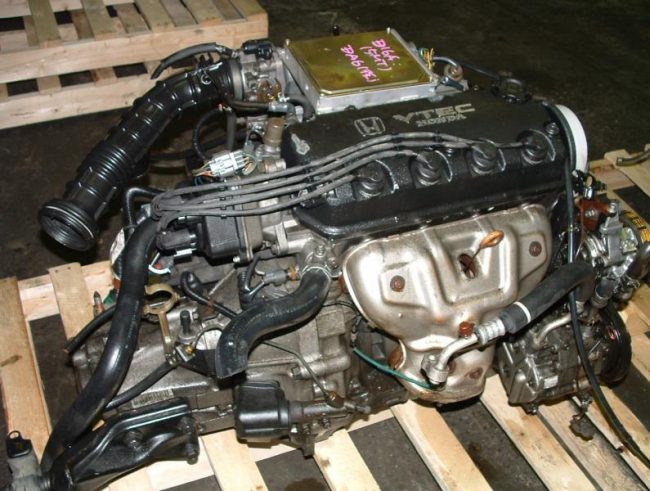
Honda D15B engine
The Honda D15B engine is a legendary product of the Japanese automotive industry, which can rightfully be considered one of the best. It was produced from 1984 to 2006. That is, he stayed on the market for 22 years, which is almost unrealistic in the face of fierce competition. And this despite the fact that other manufacturers represented more advanced power plants.
The entire series of Honda D15 engines is more or less popular, but the D15B engine and all its modifications stand out the most. Thanks to him, single-shaft motors have been developed in the world.
Description
The D15B is an improved modification of the D15 power plant from Honda. Initially, the motor was designed for use in the Honda Civic, but later it became widespread, and it began to be installed on other models. It consists of an aluminum cylinder block with cast iron liners. The head has one camshaft, as well as 8 or 16 valves. The timing belt drive, and the belt itself is recommended to be changed every 100 thousand kilometers. In the event of a break in the cylinder head of the engine, the valves will definitely bend, so the condition of the belt must be monitored. There are no hydraulic lifters here, so you need to adjust the valves after 40 kilometers.
Feature is counterclockwise rotation. In one engine, the fuel mixture is supplied through two carburetors (the development belongs to Honda), using a mono-injection system (when atomized fuel is supplied to the intake manifold) and an injector. All these options are found in one engine of different modifications.
Features
In the table we write down the main characteristics of the Honda D15B engine.
| Manufacturer | Honda Motor Company |
| Cylinder volume | 1.5 liters |
| Supply system | Carburetor |
| Power | 60-130 l. from. |
| Maximum torque | 138 Nm at 5200 rpm |
| Number of cylinders | 4 |
| Number of valves | 16 |
| Gasoline consumption | 6-10 liters in on the highway, 8-12 in city mode |
| Oil viscosity | 0W-20, 5W-30 |
| Engine resource | 250 thousand kilometers. In fact, much more. |
| Room location | Below and to the left of the valve cover |
Initially, the D15B engine was carbureted and equipped with 8 valves. Later, he received an injector as a power supply system and an additional pair of valves per cylinder. The compression power was increased to 9.2 - all this allowed to raise the power to 102 hp. With. It was the most massive power plant, but it was finalized over time.
A little later, they developed an improvement that was successfully implemented in this motor. The engine was named D15B VTEC. By name, it is easy to guess that this is the same internal combustion engine, but with a variable valve timing system. VTEC is a proprietary HONDA development, which is a control system for valve opening time and valve lift. The essence of this system is to provide a more economical mode of operation of the motor at low speeds and achieve maximum torque - at medium speeds. Well, at high speeds, of course, the task is different - to squeeze all the power out of the engine, even at the cost of increased gas mileage. The use of this system in the D15B modification made it possible to increase the maximum power to 130 hp. With. The compression ratio at the same time increased to 9.3. Such motors were produced from 1992 to 1998.
Another modification is D15B1. This motor received a modified ShPG and 8 valves, was produced from 1988 to 1991. D15B2 is the same D15B1 (with the same connecting rod and piston group), but with 16 valves and an injection power system. Modification D15B3 was also equipped with 16 valves, but a carburetor is installed here. D15B4 - the same D15B3, but with a double carburetor. There were also versions of the engine D15B5, D15B6, D15B7, D15B8 - they all differed from each other in various little things, but in general the design feature did not change.
This engine and its modifications are intended for Honda Civic cars, but it was also used in other models: CRX, Ballade, City, Capa, Concerto.
Engine reliability
This ICE is simple and reliable. It represents a certain standard of a single-shaft motor, which should be equal to all other manufacturers. Due to the wide distribution of the D15B, it has been studied “to the holes” for many years, which allows it to be repaired quickly and relatively inexpensively. This is an advantage of most old motors, which are well studied by mechanics in the service station.
D-series engines survived even with oil starvation (when the oil level drops below the permissible level) and without coolant (antifreeze, antifreeze). There were even cases when Hondas with the D15B engine reached the service station without any oil inside. At the same time, a strong roar was heard from under the hood, but this did not prevent the motor from pulling the car to the service station. Then, after a short and inexpensive repair, the engines continued to work. But, of course, there were also cases when the restoration turned out to be irrational.
But most of the internal combustion engines managed to be "resurrected" after a major overhaul due to the low cost of spare parts and the simplicity of the design of the engine itself. Rarely did an overhaul cost more than $300, which made the motors one of the cheapest to maintain. An experienced craftsman with the right tool kit will be able to bring an old D15B engine to perfect condition in one work shift. Moreover, this applies not only to the D15B version, but in general to the entire D line.
Service
Since the B series engines turned out to be simple, there are no subtleties or difficulties in maintenance. Even if the owner forgets to change any filter, antifreeze or oil in due time, then nothing catastrophic will happen. Some masters at the service station claim that they observed situations when D15B engines drove 15 thousand kilometers on one lubricant, and when replacing, only 200-300 grams of used oil was drained from the sump. Many owners of old cars based on this engine poured ordinary tap water into it instead of antifreeze. There are even rumors that D15Bs were driven by diesel when the owners mistakenly filled them with the wrong fuel. This may not be true, but there are such rumors.
Such legends about the popular Japanese engine make it possible to unambiguously draw a conclusion about its reliability. And although it cannot be called a "millionaire", with proper maintenance and careful care, it may be possible to catch up with the coveted run of a million kilometers. The practice of many car owners shows that 350-500 thousand kilometers is a resource before a major overhaul. The thoughtfulness of the design allows you to revive the engine and drive another 300 thousand kilometers.
However, this does not mean at all that absolutely all D15B motors have such a huge resource. Moreover, not the entire series is successful, but only engines made before 2001 (that is, D13, D15 and D16). The D17 units and its modifications turned out to be less reliable and more demanding on maintenance, fuel, and lubrication. If the D-series engine was released after 2001, then it is advisable to monitor it and carry out routine maintenance on time. In general, all motors need to be serviced on time, but the D15B will forgive the owner for his absent-mindedness, most other engines will not.
Malfunctions
For all their advantages, D15B units have problems. The most common are the following "diseases":
- Floating speed indicates a malfunction of the idle speed control sensor or carbon deposits on the throttle.
- Broken crankshaft pulley. In this case, it is necessary to replace the pulley; it is rarely necessary to replace the crankshaft itself.
- Diesel sound from under the hood may indicate a crack in the body or a breakdown in the gasket.
- The distributors are a typical "disease" of the D-series engines. When they are "dead", the engine may twitch or refuse to start at all.
- Little things: lambda probes do not differ in durability and, with low quality fuel and lubricant (which is common in Russia), they quickly become unusable. The oil pressure sensor may also leak, the nozzle may become clogged, etc.
All these problems do not negate the reliability and ease of repair and maintenance of internal combustion engines. Subject to the recommendations for maintenance, the motor will easily travel 200-250 thousand kilometers without problems, then - as lucky.

Tuning
Motors of the D series, in particular, modifications of the D15B, are practically unsuitable for serious tuning. Changing the cylinder-piston group, shafts, installing a turbine are all useless exercises due to the small margin of safety of D-series engines (except for engines manufactured after 2001).
However, "light" tuning is available, and its possibilities are wide. With small funds, you can make a frisky car out of an ordinary one, which at the start will easily bypass modern “running cars”. To do this, this setting must be installed on an engine without VTEC. This will raise the power from 100 to 130 hp. With. Additionally, you will have to install the intake manifold and firmware in order to teach the engine to work with new equipment. Experienced craftsmen will be able to upgrade the motor in 5-6 hours. From a legal point of view, the motor does not change at all - the number remains the same, but its power increases by 30%. This is a solid increase in strength.
What should owners of engines with VTEC do? For such internal combustion engines, a special turbo kit can be made, but this is a complicated procedure and is rarely resorted to. However, the engine resource is conducive to this.
The tips for improving the internal combustion engine described above apply to units manufactured before 2001. Civic EU-ES engines, due to their design features, are less suitable for modernization.
Conclusion
Without the slightest exaggeration, we can say that the D-series engines are the best engines for civilian cars that Honda has ever produced. Perhaps they are even the best in the world, but this can be argued. Are there many internal combustion engines in the world that, with a cylinder volume of 1.5 liters, have a capacity of 130 hp? With. and a resource of over 300 thousand kilometers? There are only a few of them, so the D15B, with its fantastic reliability, is a unique unit. Despite the fact that it has long been discontinued, it can still be seen in the ratings of various magazines.
Should I buy a car based on the D15B engine? This is a subjective matter. Even old cars with this internal combustion engine and a mileage of 200 thousand kilometers will be able to drive another hundred thousand and even more with normal maintenance and minimal repairs that will be required during operation.
Despite the fact that the unit itself has not been produced for 12 years, you can still find cars based on it on the roads of Russia and other countries, moreover, at a steady pace. And on sites selling equipment, you can find contract ICEs with a mileage of over 300 thousand kilometers, which look shabby, but at the same time remain working.

